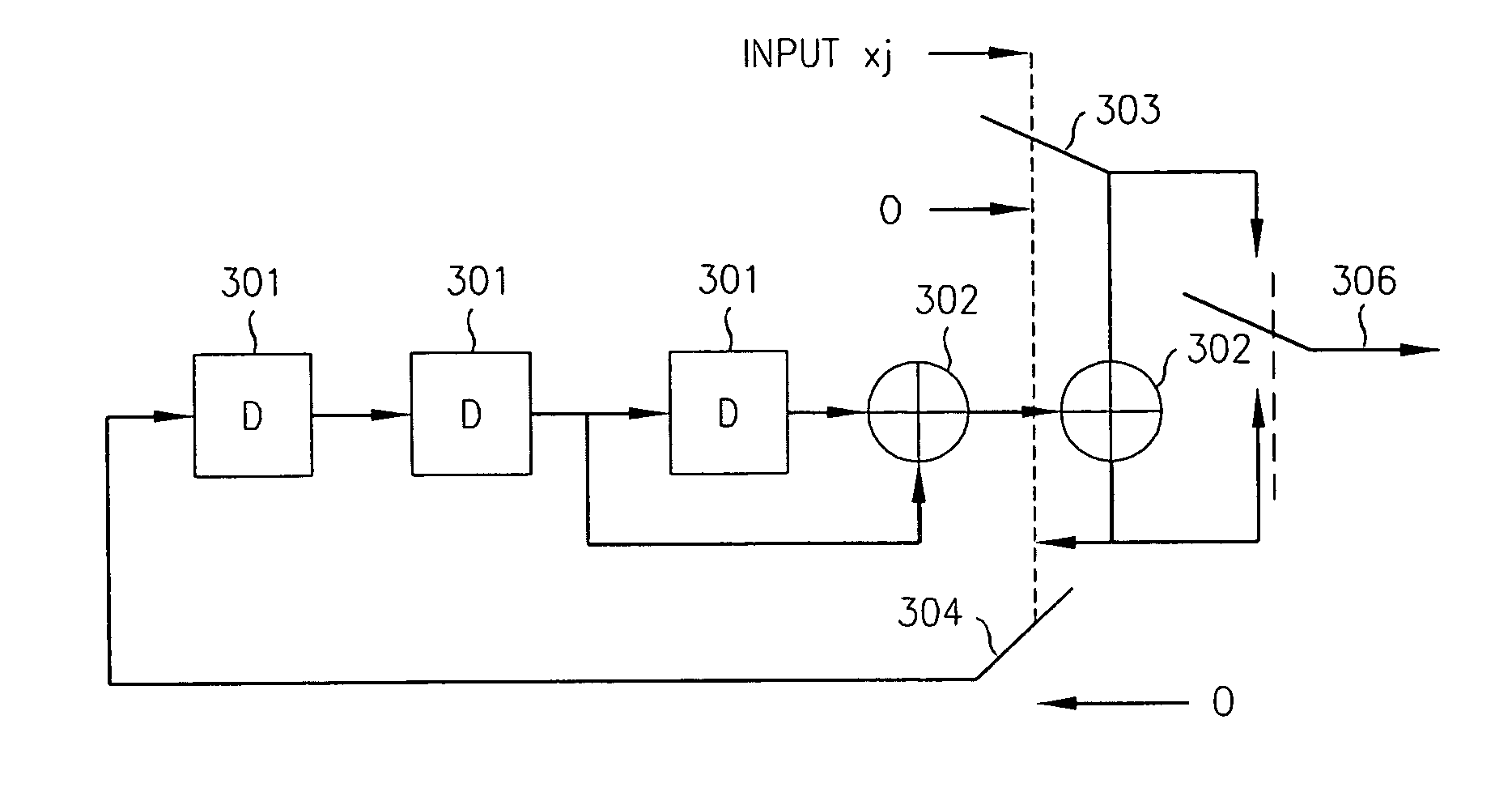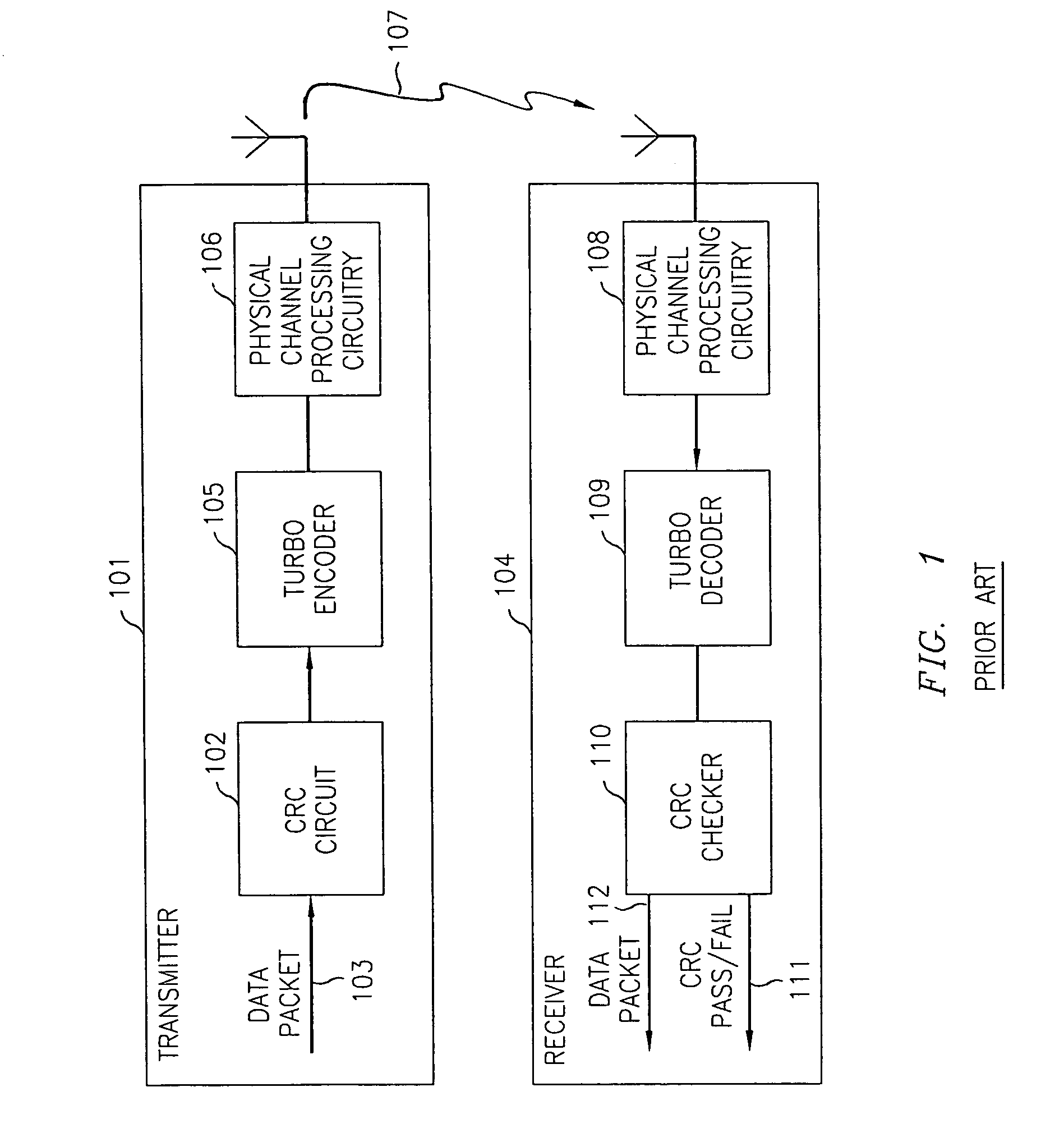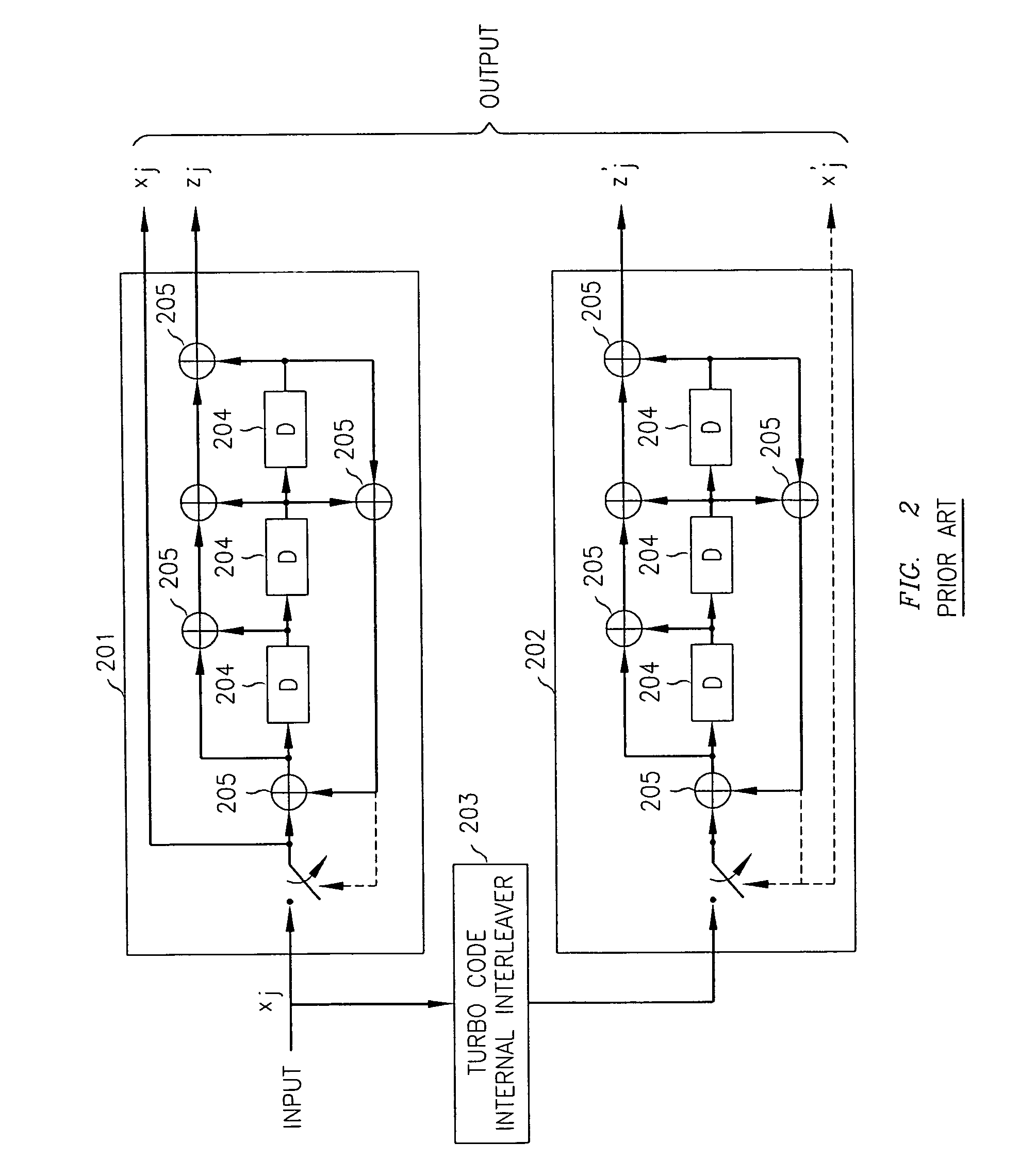Method and apparatus for detecting a packet error in a wireless communications system with minimum overhead using tail bits in turbo code
a wireless communication system and tail bit technology, applied in the field of wireless communication, can solve the problem of relatively weak error detection capability of using these three bits alone for error detection purposes
- Summary
- Abstract
- Description
- Claims
- Application Information
AI Technical Summary
Benefits of technology
Problems solved by technology
Method used
Image
Examples
Embodiment Construction
[0013] As afore noted, turbo coding is widely used in third generation wireless system such as 3GPP and 3GPP2, as well as in broadband fixed wireless IEEE802.16 systems and in satellite communications. Turbo coding is a well known in the art type of coding using a concatenation of two component codes (see, e.g., C. Berrou and A. Glavieux, “Near Optimum Error Correcting Coding and Decoding: Turbo-Codes,”IEEE Trans. Commun., vol 44, pp. 1261-1271, October 1996, and J. Hagenauer, “Iterative Decoding of Binary Block and Convolutional Codes,”IEEE Trans. Information Theory, vol. 42, pp. 429-445, March 1996). At the decoder, soft-decision decoding is performed on both received codes generating soft outputs (log-likelihood ratios). Specifically, decoding is split between the two codes by two decoders, one decoder exchanging the soft output with the other decoder after its own decoding, with the decoding being carried out multiple times, in a ping-pong manner, so that each iteration generate...
PUM
 Login to View More
Login to View More Abstract
Description
Claims
Application Information
 Login to View More
Login to View More - R&D
- Intellectual Property
- Life Sciences
- Materials
- Tech Scout
- Unparalleled Data Quality
- Higher Quality Content
- 60% Fewer Hallucinations
Browse by: Latest US Patents, China's latest patents, Technical Efficacy Thesaurus, Application Domain, Technology Topic, Popular Technical Reports.
© 2025 PatSnap. All rights reserved.Legal|Privacy policy|Modern Slavery Act Transparency Statement|Sitemap|About US| Contact US: help@patsnap.com



